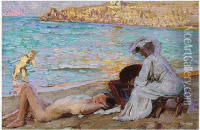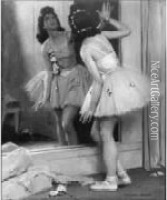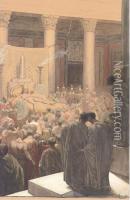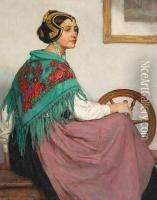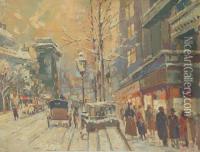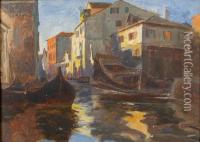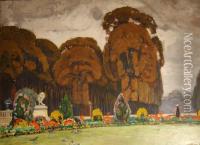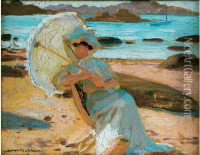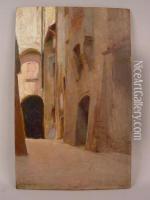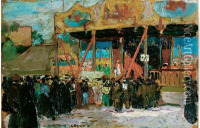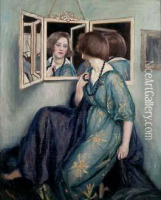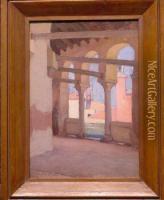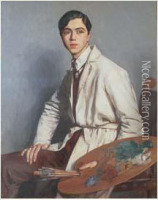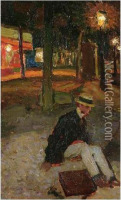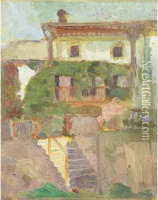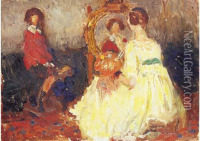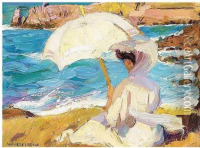Auguste Leroux Paintings
Auguste Leroux was a French painter and illustrator born on March 29, 1871, in Paris, France. He was known for his classical and academic style of painting, which was prevalent during his time. Leroux studied at the École des Beaux-Arts in Paris under the tutelage of renowned artists such as Gabriel Ferrier and William Bouguereau.
During his career, Leroux received numerous accolades and was a respected member of the artistic community. He was awarded the Prix de Rome in 1894, which was a prestigious scholarship for art students that allowed them to study in Rome. His work was exhibited in various salons and he received several medals for his contributions to French art, including a gold medal at the Exposition Universelle in 1900.
Leroux's body of work includes historical paintings, portraits, and murals. He also created illustrations for books, showcasing his versatility as an artist. His style was characterized by precise draughtsmanship, attention to detail, and a clear influence from classical antiquity and the Renaissance.
In addition to his paintings and illustrations, Leroux was also known for his decorative works, particularly his murals in public buildings and religious institutions. His work can be found in various locations in France, including the Sorbonne and the city hall of Poitiers.
Auguste Leroux passed away on February 28, 1954, leaving behind a legacy of academic art that was admired for its adherence to traditional techniques and its embodiment of the artistic values of his era. Despite the shift in artistic trends over the years, Leroux's work remains a testament to the skill and craftsmanship of late 19th and early 20th-century French academic painting.
